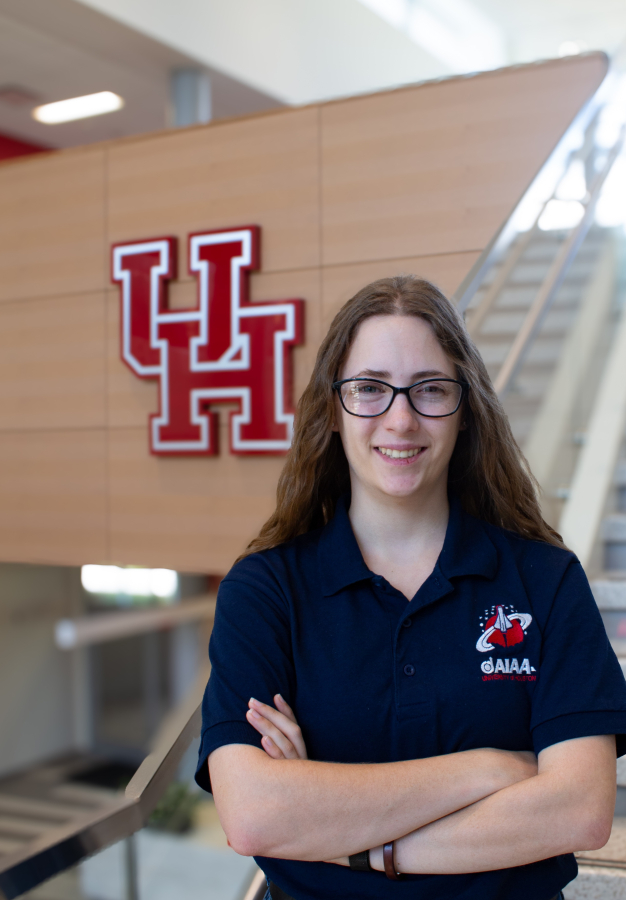Cullen graduate student Amber Jozwiak, who is currently pursuing dual master’s degrees in aerospace engineering and space architecture, has been selected as a NASA/Texas Space Grant Consortium (TSGC) Fellow for the 2025 academic year. The fellowship includes a $5,000 stipend and is open to students from any field with an interest in STEM and space-based research; Jozwiak fits the bill perfectly.
With education and experience in mechanical and aerospace engineering plus space architecture, including internships with Boeing and NASA, she’s eager to find practical, hands-on applications for her knowledge and research.
Jozwiak chose to pursue her bachelor’s degree in mechanical engineering at UH instead of going straight into an aerospace education so as not to commit to a niche too early, but she quickly “fell in love” with controls. “Aerospace is all controls,” she said. “So now here I am!”
Jozwiak also noted that AIAA — the UH student chapter of the American Institute of Aeronautics and Astronautics — helped further develop her “love for aerospace”. AIAA comprises four sub-teams: competitive international rocketry and aerodynamics teams as well as hobby rocketry and radio club teams. Students can compete in design-and-build competitions on the first two teams or obtain rocketry (levels one and two) and HAM radio certification on the second two.
“Since we don’t really have an aerospace undergraduate program, and this was before we became the Mechanical and Aerospace Engineering department, that was really the only ‘aerospace’ I had on campus. I didn’t really know any graduate students or anybody with aerospace experience except for these people,” she said. Jozwiak now serves as the organization’s secretary.
As an intern with Boeing, Jozwiak worked on the 777 Full-Scale Fatigue Test Program assisting with testing and inspections on the largest twin engine commercial aircraft they manufacture. Then, in the summer of 2024, Jozwiak returned to Houston to work with NASA on Payload Integration Management (PIM) for the International Space Station. She has since received an offer to soon begin full-time work with Boeing under the South Design Center’s senior management as a Mechanical System Design and Analysis Engineer.
Her current research with Hugh Roy and Lillie Cranz Cullen Endowed Professor & Department Chair and Aerospace Engineering Graduate Program Director Karolos Grigoriadis is a collaboration with the Air Force Research Laboratory (AFRL) to investigate and prevent flutter, which is a detrimental aeroelastic phenomenon affecting airplane wings during flight.
“Flutter is the phenomenon of wings flapping like birds, and we want to prevent that at any speed. We want to ensure that the bigger airplanes with larger wingspans can still fly at the speed that they need without having that flutter phenomenon happen, so we use control methods such as linear-quadratic regulation and linear-quadratic-Gaussian control — usually in MATLAB simulations — with state observers to push the speed at which flutter begins to occur higher and higher.
“Flutter can be disastrous,” she added. “It could rip apart a plane at its most drastic, or it could cause damage that may not be seen in general ground checks but still presents a safety risk. We want to be able to prevent all of that from happening.”
Jozwiak looks forward to opportunities to work hands-on in her field once her research and thesis are complete — something she hopes that her fellowship with TSGC could help facilitate.
“Maybe I’ll help create some device that can monitor the appearance of flutter using prognostics, so we know when we need to slow down or change something to prevent further issues,” she mused. “I’m a very visual person. I like seeing the fruits of my work.”
